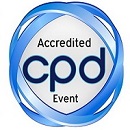
Aya N. Khanji
Universite de Lorraine, France
Title: Structure and gelation properties of casein micelles doped with curcumin under acidic conditions
Biography
Biography: Aya N. Khanji
Abstract
Casein micelles are colloidal protein particles responsible for a large proportion of milk technological properties. The manufacture of dairy products (yogurt, fresh cheese, cheese) is based on the aggregation and gelation capacity of casein micelles done under acid and rennet conditions. In this work, the casein micelles are also considered as porous structures that can stabilize and vectorize hydrophobic molecules of interest in an aqueous environment. It has recently been shown that the casein micelles can interact with polyphenols such as curcumin, an antioxidant and anti-cancerous biomolecule.
Theoretical orientation: In this study, the ability of micellar casein (MC) to interact with curcumin was investigated. The influence of presence of the guest molecule on the casein micelles structure and acid gelation ability was reported.
Methodology and findings: Steady-state fluorescence spectroscopy of curcumin variation and fluorescence quenching of caseins upon binding with curcumin molecules were evidenced. Increasing the temperature from 20 to 35 °C enhanced MC–curcumin interactions as reflected by the increase in the binding constant. From changes in entropy, enthalpy and Gibbs free energy, hydrophobic interactions were proposed as major binding forces. Static fluorescence MC quenching was demonstrated for the MC–curcumin complex during acidification. Small angle X-ray scattering profiles demonstrated that the MC internal structure was unchanged upon curcumin binding. The ζ-potential value of curcumin-doped MC indicated that curcumin did not modify the global charge of MC particles. Acid gelation studied by oscillation rheology and static multiple light scattering at 20 and 35 °C led to a similar behavior for native and curcumin-doped MC suspensions.
Conclusion and significance: For the first time, it was demonstrated that the colloidal and functional properties of MC were unchanged when doped with curcumin during acidification. This conclusion leads to a better understanding on how to produce a biomolecule doped-yogurt.

